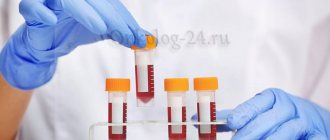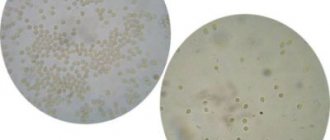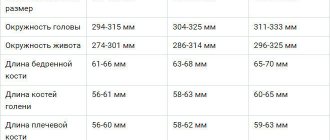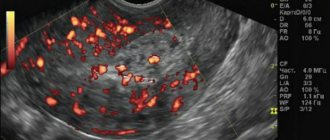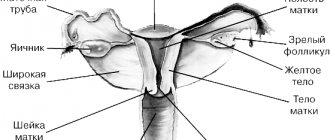Both blood and urine need to be tested in a laboratory setting to assess a person's health. One of the important components of the study of biological fluid secreted by the kidneys is leukocytes.
Assessing their amount in urine can tell not only about possible nephrological or urological diseases, but also warn about the presence of other somatic pathologies. While not having much diagnostic value individually, a urine test for leukocytes is taken in conjunction with other laboratory tests.
The numbers obtained from studying blood and urine will indicate the patient’s health status.
Changes in the level of leukocytes in urine: causes and subsequent dangers
The main reason for the increase in leukocytes in urine is the presence of an inflammatory process in the organs of the urinary system. Inflammation is not a disease, but a consequence of pathology. The urologist’s task is to find out what led to the condition and treat the cause, not the effect.
White blood cells may indicate infection. To determine its location, a three-glass urine sample is taken. The detection of leukocytes in the first glass means the presence of infection in the urethra, in the second - in the bladder, in which case bacterial cystitis can be assumed.
The main reason for the increase in leukocytes in urine is the presence of an inflammatory process in the organs of the urinary system
If white blood cells are found in all three glasses, we can say that bacterial flora is present in the kidney parenchyma, that is, the patient has pyelonephritis.
A low white blood cell count is possible, but keep in mind that their main job is to suppress any infectious agents. The absence of leukocytes means the body's potential vulnerability to infections from the outside and, in particular, the genitourinary system.
Changes in white blood cell levels may be associated with taking certain medications, as well as during pregnancy. In the latter case, changes in the level of white blood cells are due to the body's increased need to resist infections and diseases.
The longer a woman is pregnant, the more often a test is prescribed to check the level of leukocytes in the urine.
Reasons for increased levels of white blood cells in urine:
- stagnation of urine;
- kidney infections;
- appendicitis;
- chronic heart failure;
- oncology of certain organs in the human body;
- angina;
- helminthiasis;
- bronchial asthma;
- sexually transmitted diseases;
- allergic reactions.
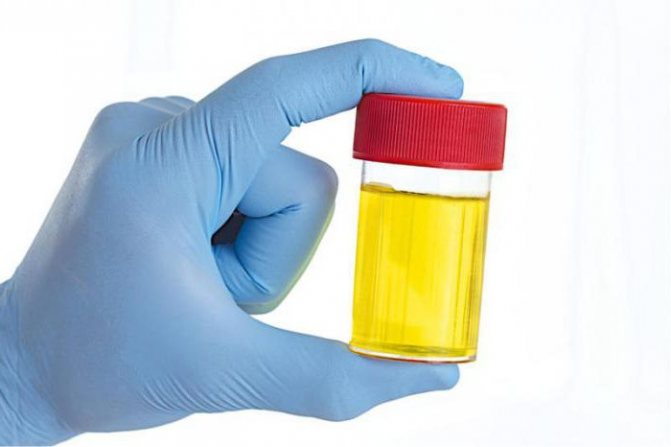
The list is incomplete, but even from it it is clear how wide the range of diseases and pathological conditions of the body is in which leukocytes can be elevated.
If you receive a result that does not satisfy you, do not self-medicate under any circumstances, but contact a qualified specialist who will prescribe you to undergo laboratory and instrumental tests in order to determine the true cause of the increase in the number of white blood cells.
Main indicators of urine analysis during pregnancy
- Color Yellow and its shades are considered normal. But some color changes are also possible, which are not always a sign of abnormalities. There are a number of foods (for example, cherries, beets, blackberries) that can color your urine. But if they were absent from the diet, then it is worth finding out what is causing the color change.
- Transparency Urine should only be transparent and a slight cloudiness is already a deviation from the norm. If the urine is not clear, most likely it contains salts, red blood cells, white blood cells, bacteria, drops of fat or pus. The causes of cloudiness may be the presence of infection, kidney stones and other problems.
These are indicators of a general urine test during pregnancy that are “visible to the naked eye.” The further research process is quite complicated and therefore takes some time. But laboratory tests will allow doctors to study other parameters.
Donating urine for leukocyte levels: rules and tips
There are rules for submitting urine for analysis, following which you will get a reliable result. It will correspond to the overall picture of the health of the body.
To submit biological material for research, use a sterile container. It is best to purchase a special container at the pharmacy for this purpose. It should not be washed or wiped with anything on the outside. The ingress of foreign elements can significantly distort the final figures.
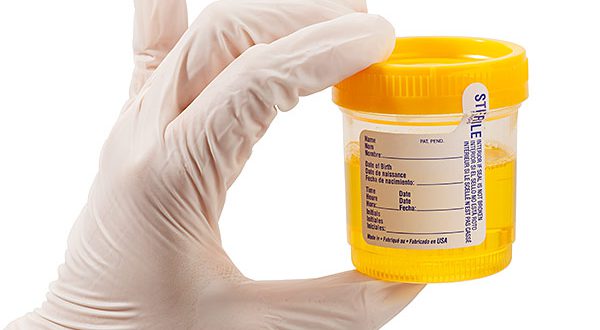
Urine should be collected in a sterile container
Use an average portion of morning urine. The previous urination should be at least 5-6 hours before. This rule is due to the fact that epithelial cells are excreted along with urine, which can affect the final result.
The collection of biological material must be carried out on an empty stomach. Since urine is the final product of human life, its physicochemical characteristics are affected by everything that a person eats.
A study on the number of white blood cells is included in OAM, and within its framework the color of urine is assessed. Therefore, on the eve of the test, you should not eat foods that can change the color of urine - this will distort the result, and in the worst case, can lead to an incorrect diagnosis.
Limit physical activity and stress, and spend the last half hour before the meeting in absolute peace. The day before the collection, you should limit your visits to the sauna and bathhouse.
For analysis, 50 to 100 ml of urine is sufficient. If you manage to collect more, do not pour the urine into another container or pour it out: contact with air negatively affects the results, distorting them.
During urination, try not to touch the container with the skin of your genital organs; particles from it that get into the urine can affect the result.
Women should not give urine during menstruation; such a state of the body is highly likely to distort the result.
Standards for biochemical urine analysis
Deciphering a biochemical urine test consists of comparing the results obtained with the norms for each indicator. Based on these data, the doctor suggests a diagnosis. For ease of comparison, norms and results are entered into a table.
For adults
Table of norms for biochemical analysis in adults.
| Index | Norm |
| Urea | 286-595 mmol/l |
| Uric acid | 2.2-5.47 mmol/l |
| Creatinine | Women - 2.47-19.2 mmol/l Men - 3.45-22.9 mmol/l |
| Albumen | Up to 30 mg/l |
| Protein | Up to 100 mg/l |
| Amylase | Women - 21-447 U/l Men - 16-491 U/l |
| Glucose | 0.3-1.1 mmol/l |
| Acetone | Absent |
| Bilirubin | Absent |
| Ketone bodies | None |
| Potassium | Women 18-40 years old - 17-145 mmol/l Women over 40 years old - 22-164 mmol/l Men 18-40 years old - 11-80 mmol/l Men over 40 years old - 17-99 mmol/l |
| Sodium | 136-145 mmol/l |
| Chlorine | 98-107 mmol/l |
| Calcium | 2.5-7.5 mmol/day |
| Phosphorus | 13-44 mmol/l |
For children
The norms for children are practically no different from the norms for adults. Enzymes and proteins have the same acceptable values. The exception is microelements. Their content in children is lower.

Table of micronutrient standards for children.
| Index | Norm, mmol/l |
| Sodium | Up to one year - 6.5-13.6 1-6 years - 51-133 Adolescents - 87-217 |
| Potassium | Up to one year - 12-29 From one year - 35-78 |
| Chlorine | Up to one year - 0-28 From one year - 14-169 |
| Phosphorus | Up to 30 |
| Calcium | 2,1 |
Decoding
Given that each organism is deeply individual in its characteristics, there are certain standards that doctors of all specializations try to adhere to when interpreting the result.
- For boys over 12 years old and for men - up to 3;
- For girls over 12 years old and for women - up to 5;
- For boys under 12 years old - from 5 to 7 units;
- For girls under 12 years old - from 7 to 10 units.
The number of white blood cells in the urine is measured in special units “in the field of view”. From what is presented, you can see that the norms for the female sex differ from the corresponding figures for the male sex to a greater extent.
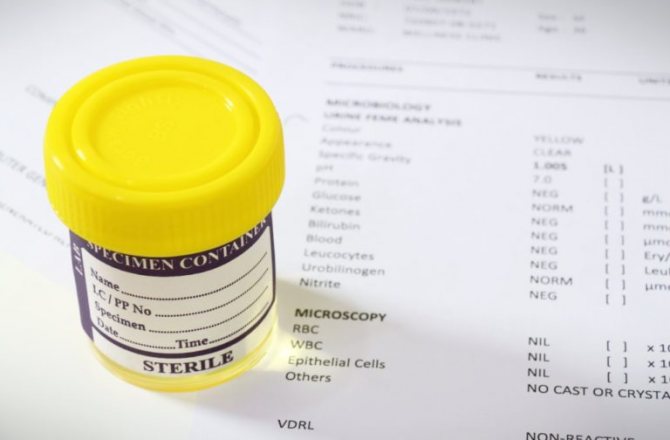
To determine how bad the results are for a particular person, a urine test is not enough; you need to undergo laboratory tests, and use the final numbers to judge your health status.
If an excess of leukocytes is detected in the general analysis, a urine test is performed according to Nechiporenko, the norms for which are as follows:
- for men and children - no more than 2000 units per ml;
- for women - no more than 4000 units per ml.
How the analysis is collected and processed
Needless to say, only proper preparation and direct urine collection can help obtain reliable information regarding the analysis performed.
Here are some important rules that must be followed:
- A urine sample should be collected only in the morning on an empty stomach;
- You only need to use a medium portion of urine. In this case, the beginning and end of urination are missed;
- It is required to comply with all necessary hygienic procedures before collecting urine;
- the sample is collected only in a sterile container purchased from a pharmacy or in a glass jar treated with boiling water;
- If a test needs to be taken on a baby, then you should use a special urine collection for this. It is prohibited to squeeze urine out of diapers or nappies, pour it from a potty, etc.;
- It is recommended that approximately 3 days before the test, you should follow a diet, giving up salty and spicy foods;
- It is better to give up alcohol and smoking;
- it is recommended to stop taking antibiotics the day before the test, and you should warn the laboratory technicians and the doctor who will conduct the analysis about long-term use;
- Samples are not taken if women have started menstruating;
- It is better to postpone procedures such as x-rays or ultrasound to a slightly later time.
When analyzing the resulting sample, certain indicators of the medical norm will be taken into account.
Thus, a small number of leukocytes may be allowed in the urine of a healthy person. This parameter will differ not only by age, but also by gender. From here:
- the norm of leukocytes in a woman will be 0-5 in the p/z, and in a man 0-3 in the p/z;
- The number for children will be: for girls it is allowed within 8-10 in the p/z, and for boys it will be 5-7 in the p/z.
For greater reliability, a special urine test, called the Nechiporenko test, can be performed. In this case, the allowed norm is no more than 4000 leukocytes in 1 μl. If the test shows an increase in the level of leukocytes to 20, then this phenomenon is called leukocyturia.
If the increase has reached 60 or more units in the urine, then it is worth talking about the presence of pus in the urine. Such a deviation from the norm only indicates that serious inflammation in the genitourinary system will occur in the body.
The urine itself will be cloudy at the moment, it will give off a characteristic unpleasant odor, and inclusions may appear in the form of flakes or threads. May be accompanied by blood in the urine and the detection of large amounts of protein.
Similar articles:
- BLD in a urine test - interpretation of the analysis, norm and deviation BLD in a urine test - this is most often not very...
- Latin designations in urinalysis A general urinalysis can give the doctor a lot of information about the condition...
- Decoding VTC in urine analysis The abbreviation VTC refers to the designation Vesical Tissue Cells, which translates...
- Why is blood dangerous in a urine test? Blood in the urine is a phenomenon in medical terminology that has...
When are Zimnitsky tests prescribed?
The Zimnitsky analysis is prescribed to study kidney functionality.
The diagnostic factors of this method are: the density of urine and changes in its numerical indicators in different portions, and diuresis - the ratio between the amount of fluid consumed and excreted in 24 hours.
Normal indicators:
- The difference in urine density between the highest and lowest values is not less than 0.012;
- Daytime diuresis is twice as prevalent as nighttime diuresis;
- The daily amount of urine is not less than 65% and not more than 85% of the fluid consumed;
- The allowed minimum density of urine is 1.005, the maximum is 1.030.
Deviations indicate kidney disease: pyelonephritis and glomerulonephritis .
General table of indicators
| Index | Norm | Reasons for the increased content | Reasons for low content or absence |
| Total Density SG | 1.008 – 1.030 g/l | More than 1.030 g/l – with insufficient fluid intake, impaired renal function, edema, acute glomerulonephritis, diabetes mellitus. | 1.010 – 1.011 – with impaired renal function; Less than 1.005 – diabetes insipidus; Less than 1.015 – with diets, large fluid intake, and reduction of edema. |
| Urobilinogen UBG | No more than 17 mol/l; In the old-style forms, the urobilin content is recorded, + – weakly positive, ++ – positive, +++ – strongly positive, which indicates the degree of urobilinuria | Functional liver disorders: hepatitis, intoxication (poisoning with alcohol, chemical compounds, sepsis); cirrhosis, liver failure. | ___ |
| Bilirubin BIL | Not determined | Hepatic and obstructive jaundice | ___ |
| Ketone bodies KET | Not defined | Diabetes types 1 and 2, a strong increase in ketones is observed in coma; Long-term diets, alcohol poisoning, postoperative period | ___ |
| Red blood cells BLD | Not detected | Pyelonephritis and glomerulonephritis in the process of exacerbation, prostatitis, trauma and inflammation in the kidneys and urinary tract, tuberculosis, heart attack, kidney cancer. | No more than 3 in the field of view, which can happen during physical stress |
| Protein PRO | Less than 0.002 g/l | Infections and foci of inflammation in the kidneys and urinary tract, kidney tuberculosis, amyloidosis, bleeding, hypertension, long-term anemia. | ___ |
| Nitrite NIT | Not defined | Infection of the urinary tract by pathogenic bacteria | ___ |
| Leukocytes LEU | Up to 3 for men and up to 5 for women | Kidney diseases in acute and latent phase: pyelonephritis, glomerulonephritis; urinary tract inflammation, amyloidosis and renal tuberculosis | ___ |
| Glucose GLU | Not detected | Kidney diabetes | ___ |
| pH reaction | 5 – 7 | Diabetes mellitus, prolonged fasting, kidney tuberculosis, functional kidney disorders | Cystitis, hematuria, after vomiting and gastric lavage, |

